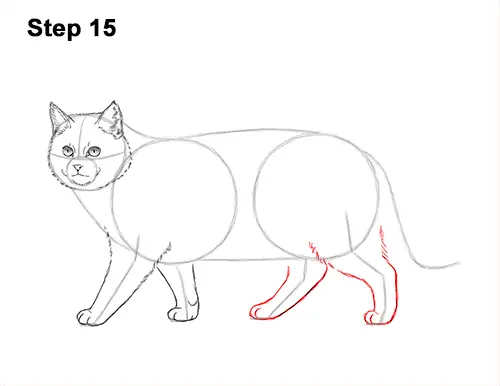
Step 15: Use the angled line on the far right side as a guide to draw the cat's first hind leg. Follow the path of the guide and lightly sketch the shape of the leg around it. The top of the hind leg should be a lot wider than the top of the front leg. Curve the lines where the guide bends to create the joints. When you get the shape right, darken the lines. Draw a couple of curved lines at the bottom for the cat's toes. Use the last angled line under the body as a guide to draw the other hind leg the same way. Draw the shape of the leg around the guide. The top part of the leg is behind the body, so don't draw it.
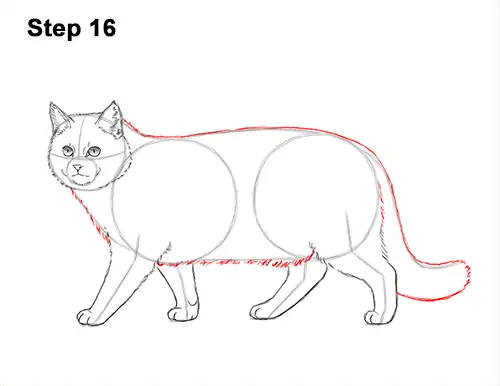
Step 16: Use the remaining lines and shapes as guides to draw the rest of the body. Darken the outer edges of the guide to create the shape of the wildcat's body. Use short strokes along the bottom for the fur. Darken the curved line on the right for the first part of the tail. Add a curved line below that to make the shape wider. Use short strokes for the tip.
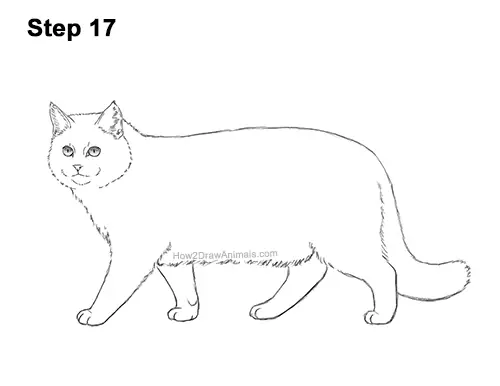
Step 17: For a cleaner look, erase as much as you can of the initial guide lines. Don't worry about erasing all of the guides. It's okay to leave some behind. Re-draw any final sketch lines you may have accidentally erased.
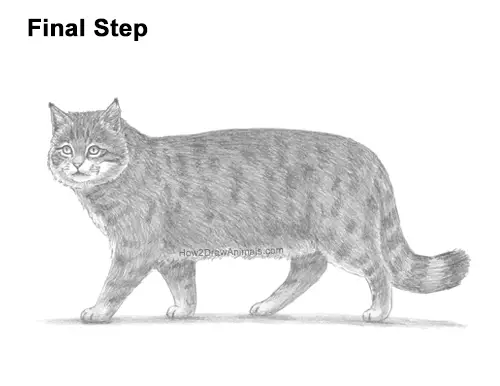
Final Step: Shade your drawing for extra detail. Shade using a series of strokes for a furry texture. For the head, the strokes should radiate outward from the nose. Shade lightly at first, and then gradually build up to darker values. Push hard on your pencil for darker values and push lightly on your pencil for lighter values. Add a couple of dark lines on the sides of the eyes for the coat pattern. Leave the area aroujnd the eyes and muzzle blank. Use a dark value on the forehead for more of the coat pattern. For a more detailed guide on how to shade, check out this tutorial: How to shade.
The strokes on the body should have a more horizontal orientation. As you shade, separate each individual stroke a bit so that the white of the paper comes through. Use a dark value throughout the body to create the spots and stripes. Don't overthink the coat pattern. Just add spot and stripes randomly all over the body using a darker value. Use thick stripes for the tail and leave the paws blank. Continu adding more strokes on top of strokes for the rest of the fur. Shading can be time-consuming, so be patient and take breaks.
Add more value to the legs that are on the other side of the body for shadows. Add more value throughout he body for more shadows. Pick the direction of the light source as you shade so that the shadows are consistent. It's a good idea to use reference as you draw for a more accurate depiction of a wildcat. Draw a shadow on the bottom using a medium value. This grounds the cat so that it doesn't appear to be floating.
Thanks for visiting! Subscribe to the How2DrawAnimals YouTube Channel for a new tutorial every week.
To learn how to draw popular cartoon characters, visit EasyDrawingTutorials.com.
To learn how to draw Manga, visit How2DrawManga.com.
RELATED TUTORIALS
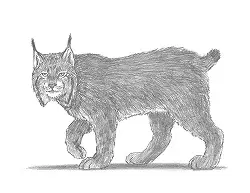 |
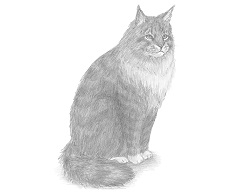 |
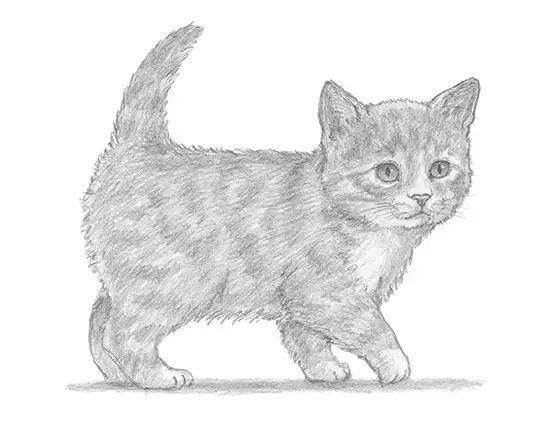 |







